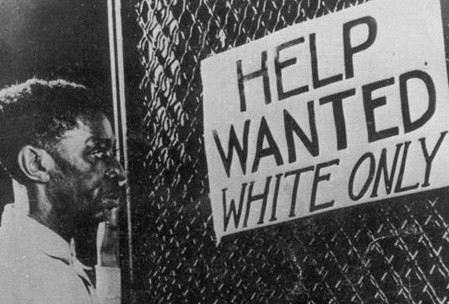Economic Opression
The practice of forced labor, low wages,
employment discrimination and denial of equal opportunity
based on sex, nationality, race, or religion.
Then

Certain jobs were reserved “for whites only.”
Jim Crow restricted economic possibilities and success for African-American families. In order for the ruling middle and upper-class whites to maintain power, they created laws that prevented poor African-Americans and whites from working together and forming unions. The more desirable jobs were reserved for whites and African-Americans were given the worst jobs for the lowest pay.
According to Douglas A. Blackmon, under the Black Codes and subsequently Jim Crow, tens of thousands of African-Americans were arrested, incurring outrageous fines, and were accountable for the costs associated with their own arrests. Unable to pay these debts, prisoners were sold as forced laborers to coal mines, lumber camps, brickyards, railroads, and farm plantations.Thousands of other African Americans were simply seized by southern landowners and forced into years of involuntary servitude. Government officials also leased falsely imprisoned blacks to small-town entrepreneurs, farmers, and corporations for cheap labor. Unlikely slavery, employers had little invested in these leased convicts so they were treated poorly.
“Prisoners became younger and blacker, and the length of their sentences soared.”- David Oshinsky, author of Worse Than Slavery.
Fear, intimidation and even death were used against African-Americans for attempting to secure any type of socioeconomic success for themselves and their families. In addition to limited and restrictive work opportunities, not having access to good neighborhoods, schools and hospitals that were white only widened the economic gap over several generations.
With the passing of the Civil Rights Act of 1964, it became illegal to discriminate based on race, color, religion, sex, or national origin. “It ended unequal application of voter registration requirements and racial segregation in schools, at the workplace and by facilities that served the general public.” Many barriers that crippled minorities were beginning to change.
President Lyndon B. Johnson's speech and signing of the Civil Rights Act of 1964. Broadcast live from the East Room of the White House. July 2, 1964.
